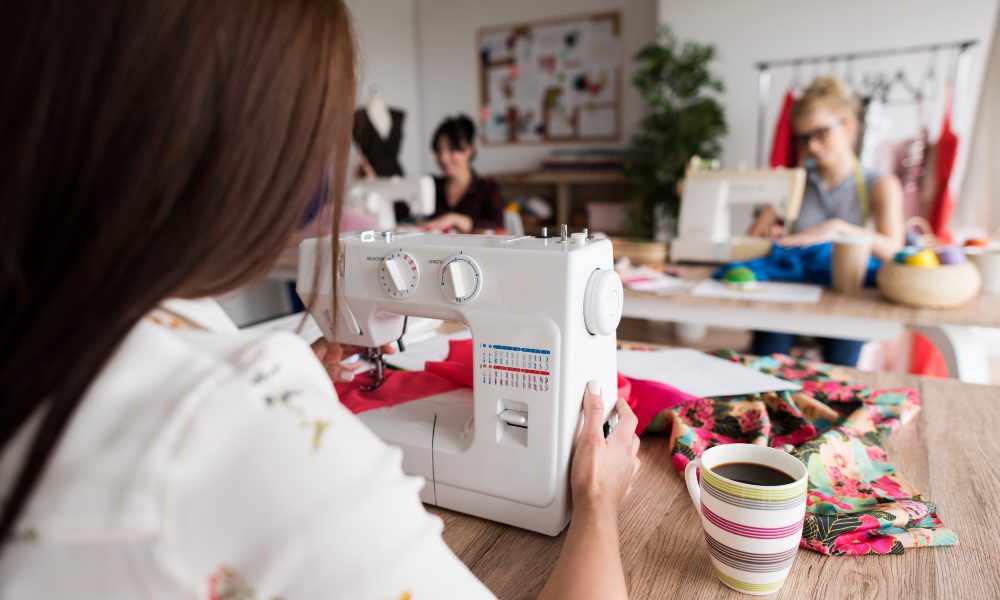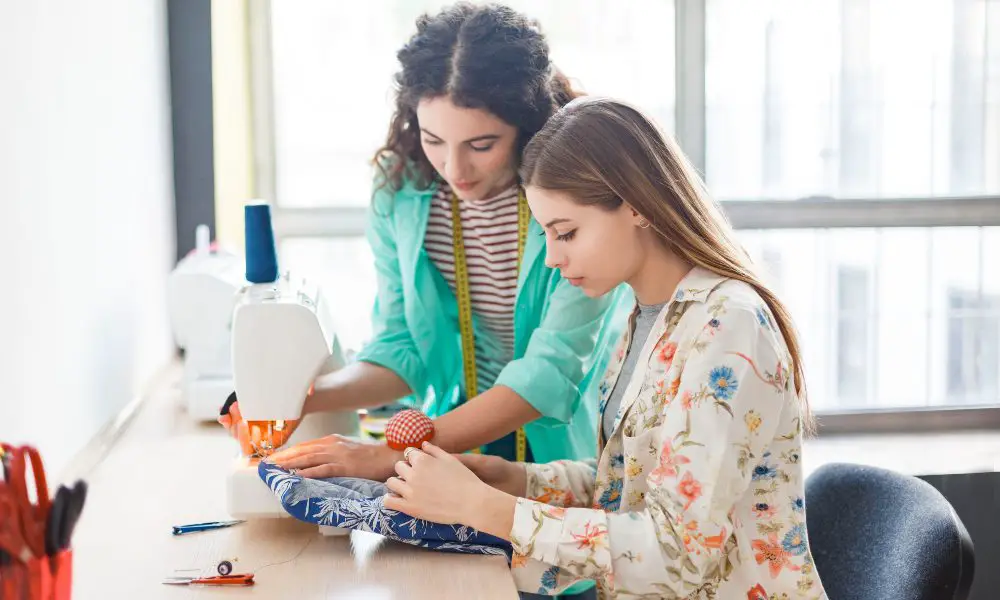Have you been wanting to learn how to sew and stitch fabric together to create or mend your own clothes and household items? Developing sewing skills allows you to produce customized pieces that fit your style. While learning to sew may seem intimidating initially, anyone can grasp the basics with some essential tools, materials, and techniques. This complete guide covers everything you need to start sewing today.
Gather Your Sewing Supplies
Having the proper sewing tools and materials on hand facilitates learning sewing stitches for beginners. Start by collecting these fundamental supplies.
Invest in a Quality Sewing Machine
A versatile sewing machine proves extremely useful for most sewing projects, from garments to crafts. Beginner sewers should start with a standard mechanical sewing machine offering key straight and zigzag stitch options. More complex machines feature built-in specialty stitches, embellishment functions and computerized operation.
Stock Up on Hand Sewing Needles
While a sewing machine efficiently tackles long seams, hand sewing remains indispensable for many applications. An array of hand-sewing needles in assorted types and sizes allows you to neatly sew on buttons, make invisible repairs by hand, and finish raw edges. Always match the needle size to the thread thickness for smooth sewing.
Purchase All-Purpose Thread
Quality polyester or cotton-covered polyester thread works beautifully for most general sewing projects. These flexible threads resist breaking yet have sufficient strength to secure a variety of fabrics neatly. Build up a thread collection in an array of colors.
Gather a Variety of Fabric Types

Expand your fabric inventory with various fibers, prints, and solids in woven and knit fabric types. Understanding how fabrics with unique properties sew and handle proves helpful. Some options to explore include cotton, linens, silks, fleeces, denim, and jerseys.
Round Out Your Sewing Kit
A well-stocked sewing kit prepares you to complete nearly any sewing request. In addition to needles and thread, be equipped with seam rippers, straight pins, scissors, tape measures, muslin, interfacing, and more sewing tools.
Master Key Hand and Machine Sewing Methods
Now it’s time to practice foundational hand and machine sewing techniques essential for any beginner. Conquering basic stitches by hand and machine allows you to handle numerous sewing projects easily.
Learn Useful Hand Stitches
Devoting time upfront to perfect essential hand-sewing stitches expands your capabilities by allowing flexibility beyond machine sewing.
- The running stitch temporarily joins fabrics like when gathering or basting.
- The precise backstitch reinforces points undergoing strain for a durable hold.
- Nearly invisible, the slip stitch neatly joins folded edges inside hems or along seams.
- The adjustable whip stitch connects fabrics with a dotted stitch around the edges.
Conquer Essential Machine Skills
When cozy with handwork, shift focus to your machine’s potential. Getting truly comfortable with straight and zigzag sewing unlocks endless creative possibilities.
- The multipurpose straight stitch sees action for seaming, hemming, topstitching, and quilting. Master adjusting stitch length and tension to suit materials.
- Allow knits to move by using the stretch zigzag stitch to enclose raw edges with tidy rows of side-to-side stitching.
- Hide hems discreetly inside curtains, pants, and skirts using the precise blind stitch setting. Adjust width and length as needed.
- Personalize clothing and crafts by programming your machine’s automatic buttonhole feature to sew perfect fit button holes.
Once these elemental skills feel natural, you can sew just about anything!
Beginner Sewing Patterns and First Projects
What should a novice sewer tackle for that very first independent project? Start by selecting simple beginner sewing patterns offering big rewards for building confidence.
Sew a Drawstring Bag
The humble drawstring bag makes an easy first machine sewing project. Decorate with ribbons, doodles, or patches.
Stitch Together a Mini Quilt
Discover quilting by piecing together charm squares or fat quarters arranged in a pleasing patchwork design.
Craft a Festive Headband
This cute hair accessory allows for creativity in selecting colors and textures of materials.
Fix Up an Old Sweater
Try visible mending by using embroidery floss to creatively stitch holes and worn areas. Celebrate the imperfection!
Handy Sewing Tips, Tricks and Terms
Apply this needle knowledge to simplify learning:
- Understand the behaving properties of standard fabrics like stretchy knits and structured canvas.
- Insert new machine needles regularly and install types best suited to each project’s fabric weight.
- Use presser feet designed for specific tasks like perfectly aligning zippers and piping.
- Prevent off-grain cutting by carefully pinning together pattern pieces before cutting fabric.
- Adjust machine tension so the needle thread and bobbin thread interlock in the middle of the fabrics.
- Mind the seam allowance space between stitched lines and raw project edges.
- For visibility while hand stitching, position work under a bright lamp and keep the thread taut.
- Press as you sew to help fabrics, seams, darts, and hems lay flat and crisp.
- Install critical accessories like a seam guide and needle threader to streamline sewing tasks.
Where To Go Once Basics Are Under Your Belt
As your competence improves, how will you apply your sewing skills next?
- Create custom clothing with details like pockets and collars for a sophisticated look.
- The design decorator throws pillows using basic shapes embellished with trims, tassels, and applique.
- Gift personalized bibs, burp cloths, and blankets for expecting friends.
- Craft fabric baskets, organizers and storage solutions exactly sized for your needs.
- Preserve memories in fabric photo books, memory quilts, or shadow boxes with sentimental fabrics.
The possibilities stretch as far as your imagination!
FAQs
What is the best sewing machine for beginners?
A primary mechanical sewing machine that offers straight and zigzag stitches works well to start. Look for easy stitch selection, top-loading bobbins, and adjustable tension.
How much does it cost to learn sewing?
Learning to sew requires an initial investment in supplies and equipment, but purchases can build over time. Begin with a basic sewing kit, fabric remnants, needles, thread, and an entry-level sewing machine. Budget $200 to $300 to begin.
Is hand sewing or machine sewing easier for beginners?
Most find hand sewing a more accessible place to start learning. However, advancing to basic machine sewing unlocks many more possibilities. Practice both hand and machine skills from the beginning.
What fabric is best to learn sewing?
Lightweight woven cotton or cotton blends work beautifully for beginners. These fabrics handle well yet are forgiving when mistakes get made. Stay away from slippery satins or tricky knits initially.
It’s Time to Start Stitching!
Learning how to sew while working through initial hurdles soon ignites creativity and usefulness most find intrinsically rewarding. Begin by amassing fundamental supplies and materials for sewing. Master basic handwork before progressing to machine sewing essentials. Completing some starter projects builds confidence to expand skills further. Soon, you’ll mend, create, and customize like a pro – all thanks to developing essential sewing abilities.
Now that you have all the basics, what sewing project will you start first?
***
Main image: freepik




